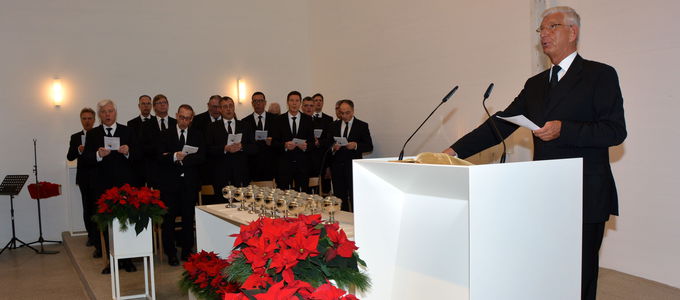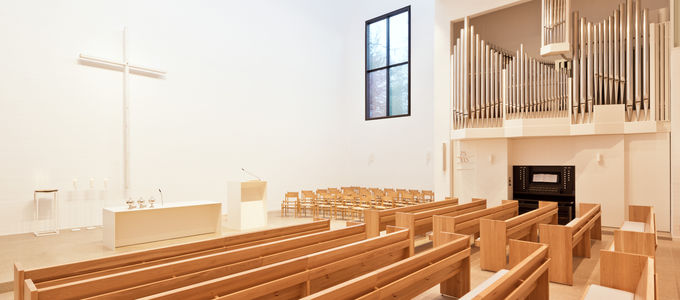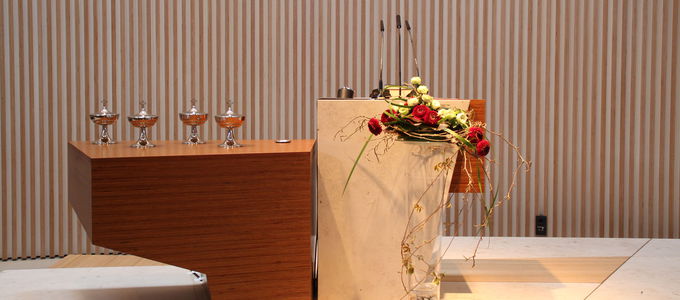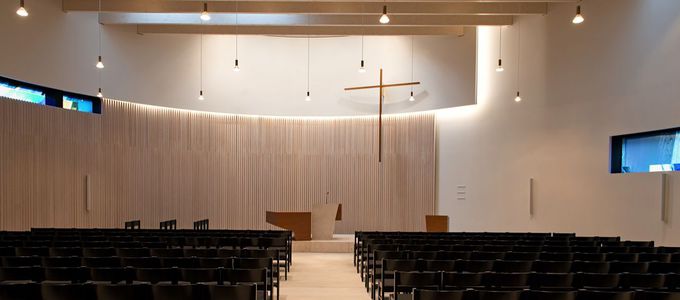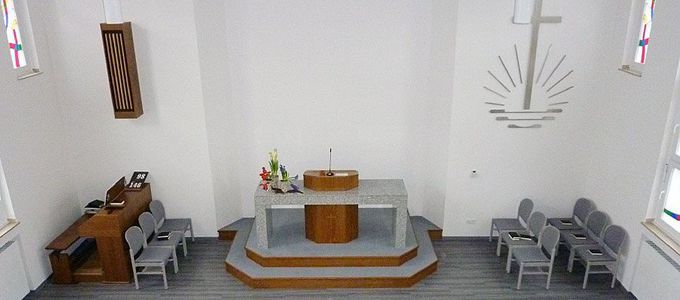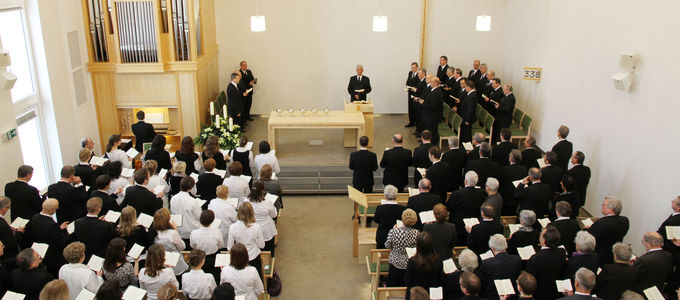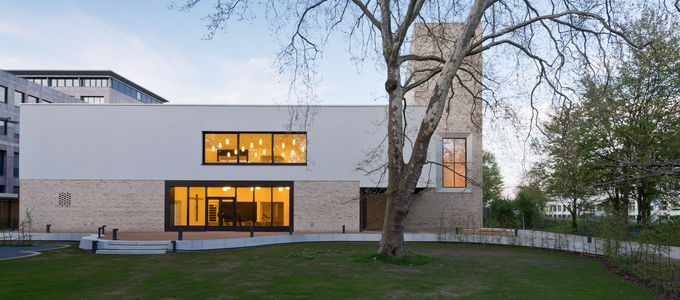
“You don’t even have an altar.” Members in our church in Hanover-South often hear this sort of thing. Why this is the case and why this is not true … Here is a look at the congregation the Chief Apostle will be visiting this coming Sunday.
Traditionally, an altar is normally made from wood or stone. These are the altars that most New Apostolic Christians are familiar with: a block or a cabinet on a platform, on top of which is a small desk on which the Bible is placed. To the right and left there is space for the communion cups.
This is completely different in our church in Hanover-South (Germany): a kind of a lectern—in steel, only eight millimetres thick, and painted white—has been positioned in the central axis of the nave. Next to it, about half a metre away, is a table made from the same material. What is the point?
Proclamation of the word and Holy Communion
This design has a history, District Elder Rainer Lorenz and Shepherd Dirk Müller report. The design of the building, which was inaugurated almost a year ago to the day, is the result of an architectural competition. The winning idea called for a division of the chancel: the choir area on one side, and the liturgical space with the altar and seating for the ministers on a slightly raised platform on the other side.
With a design like this, a classic symmetrical altar fell flat. Looking for a solution, the designers studied the liturgy of the services of the New Apostolic Church and discovered two central elements: the sermon and Holy Communion. So they divided the altar space, the chancel, into two elements as well: on the one hand, the ambo (or lectern) from where the sermon is delivered, and the table of the Lord where Holy Communion is celebrated. A revolution? Nothing of the sort.
The historical context
There is a history to all of this. The altars we as New Apostolic Christians are so familiar with today were created by combining these two elements. Already in its predecessor, the Catholic Apostolic Church, the communion altar and the pulpit were two completely separate units. Manfred Henke, a religious historian, confirmed this on request.
How and why the two were combined into one altar in the New Apostolic Church has not been investigated fully. But it can be assumed that this combined altar came into our Church in the early days of the Apostles Schwarz and Menkhoff under the influence of Calvinism and Pietism—for the same reason we did away with incense and vestments.
Similar architecture throughout Germany
Nowadays too, the liturgical division is clearly visible in some churches: such as in Hamburg-Eppendorf in northern Germany or in Sprockhövel, in the west. In both cases, the altar resembles a big table, in whose centre a kind of pulpit has been fitted.
This combination also exists asymmetrically, for example in Ditzingen in the south of Germany or in Weimar, in the east. Here the sermon is delivered right at the edge of the table of the Lord. So the step to separating the two, as was done in Hanover-South, was a small one, the rector, Dirk Müller, explains, who is a carpenter and an industrial designer. In the meantime, he works for the Church administrative offices.
The focus is on the liturgy
So this is a concept for every church? Definitely not! “In the final analysis, design is also a matter of taste,” Shepherd Müller says. And for the one or other member this design was certainly a stumbling block. But when the new church and community centre was opened—which meant that four congregations were merged—they found a new home in one of the neighbouring congregations, District Elder Lorenz says.
The design of the altar is not only seen critically in Hanover. There are no considerations whatsoever to adopt this idea and make it a principle. The division of the altar will be an exception.







